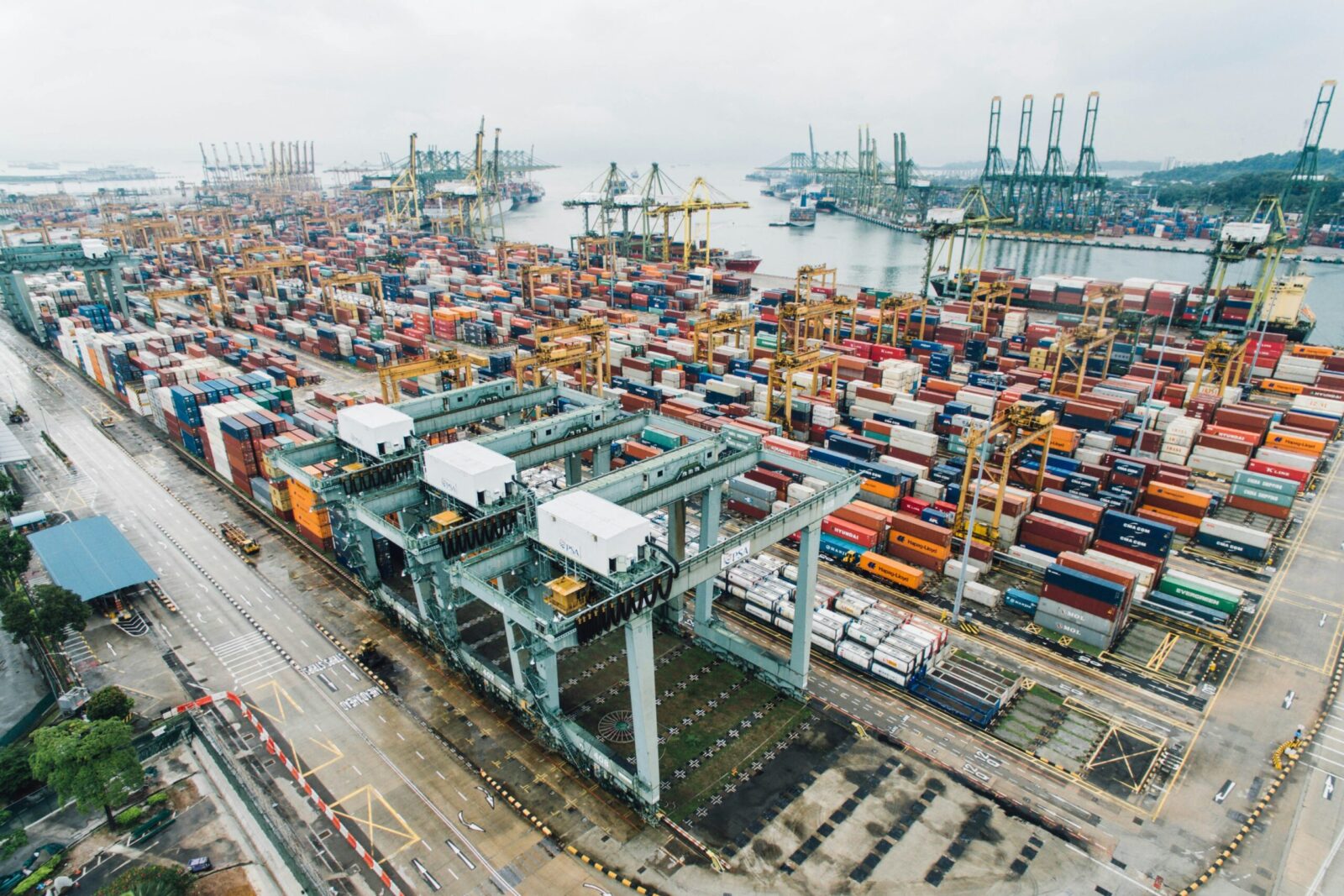
Hantering av leveranskedjan: 10 trender som formar dess framtid
Inledning Snabba tekniska genombrott och förändrade marknadsvillkor formar supply chain management. Företagen måste anpassa sig till dessa förändringar för att...

Få 200 Kr rabatt på första köpet!
I den globala ekonomins ständigt föränderliga landskap ställs företagen inför en mängd risker inom just leveranskedjan, som i sig kan innebära stora utmaningar.
Till exempel kan en naturkatastrof i en viktig tillverkningsregion orsaka allvarliga produktionsstörningar, medan geopolitiska spänningar kan leda till handelsrestriktioner som påverkar tillgången till viktiga resurser. Dessa oförutsedda störningar understryker vikten av effektiv riskhantering i leveranskedjan för att säkerställa en smidig och konkurrenskraftig verksamhet.
I den här artikeln utforskar vi riskerna i leveranskedjan och tar upp viktiga ämnen som vanliga risker, riskbedömning och riskanalys, riskhantering av leverantörer med mera. Vårt mål är att ge dig den kunskap som krävs för att effektivt hantera och minimera riskerna i leveranskedjan och därmed säkerställa stabilitet och framgång för ditt företag i ett ständigt föränderligt landskap.
Här är de ämnen vi kommer att behandla i denna artikel:

Risker i leveranskedjan kan i stort sett kategoriseras i fyra huvudgrupper: operativa, finansiella, ryktesrelaterade och externa risker.
Att förstå dessa riskkategorier är avgörande för att företag effektivt ska kunna hantera och dämpa potentiella störningar.
Några av de vanligaste riskerna i leveranskedjan är
Att genomföra en grundlig riskbedömning av leveranskedjan är avgörande för en effektiv riskhantering. Genom att identifiera och prioritera potentiella risker kan företagen utveckla riktade strategier för att minska riskerna och fördela resurserna effektivt, vilket säkerställer en motståndskraftig och lyhörd leveranskedja.
För att bättre förstå processen ska vi titta närmare på stegen i en riskbedömning av leveranskedjan:
Utveckla strategier för riskreducering: För varje prioriterad risk ska ni ta fram en plan för att förhindra, minska eller hantera dess potentiella påverkan för er leveranskedja, genom att t.ex. köpa in material från flera leverantörer eller införa potentiella transportalternativ.

En effektiv riskhantering i leveranskedjan kräver löpande övervakning av identifierade risker samt kontinuerlig sökning efter nya eller framväxande hot. Se regelbundet över era riskbedömningar och uppdatera dem vid behov för att återspegla förändringar i leverantörskedjan eller den externa miljön.
Dessutom är flexibilitet och anpassningsförmåga avgörande för att hantera risker i leveranskedjan. Var beredd på att anpassa era strategier och processer till förändrade riskfaktorer, så att leveranskedjan förblir motståndskraftig och flexibel inför potentiella störningar.
Att utvärdera de risker som är förknippade med era leverantörer är en viktig del av riskhanteringen i leveranskedjan. Genomför regelbundna riskbedömningar av leverantörer för att identifiera potentiella problem och bedöma deras potentiella inverkan på er leveranskedja. Viktiga områden att ta hänsyn till vid en riskbedömning av en leverantör är finansiell stabilitet, kvalitetskontroll, leveranssäkerhet och efterlevnad av bestämmelser.
Starka relationer med era leverantörer är avgörande för en effektiv hantering av leverantörsrisker. Främja öppen kommunikation, samarbeta kring gemensamma initiativ och involvera era leverantörer i ert riskhanteringsarbete. Genom att behandla era leverantörer som partners kan ni arbeta tillsammans för att minska riskerna och säkerställa en mer stabil och motståndskraftig leveranskedja.
Att anta ett strategiskt förhållningssätt till upphandling är avgörande för att minska upphandlingsriskerna. Genom att diversifiera er leverantörsbas kan ni minska beroendet av en enskild leverantör och minimera effekterna av eventuella störningar. Du kan till exempel köpa in komponenter från flera leverantörer i olika regioner för att undvika att vara alltför beroende av en leverantör, som kan drabbas av produktionsförseningar eller andra problem.
Att utforska alternativa inköpsställen kan bidra till att minimera geopolitiska risker. Genom att köpa in material från olika länder eller regioner kan företagen mildra effekterna av regionala instabiliteter, lagändringar eller handelskonflikter.
Det är just här som en marknadsplats som Droppe kan göra skillnad.
Droppe är en marknadsplats för grossisthandel av industritillbehör där du enkelt kan bläddra i en omfattande katalog med 100 000+ industritillbehör och jämföra 100+ europeiska leverantörer baserat på deras produktutbud, pris, leveranstid och mycket mer.
Dessutom kan dataanalys i realtid ge värdefulla insikter om leveranskedjan och hjälpa er att identifiera potentiella risker, sårbarheter och möjligheter till förbättringar. Ett logistikföretag kan till exempel utnyttja realtidsdata om fraktvägar, vädermönster och transportkostnader för att optimera sin speditionsverksamhet och minimera risken för förseningar eller avbrott.
Sammantaget kan ett strategiskt förhållningssätt till inköp, diversifiering av leverantörer och användning av avancerade verktyg och tekniker för upphandling avsevärt förbättra er förmåga att hantera och dämpa upphandlingsrisker på ett effektivt sätt.

Att hantera risker i leveranskedjan är en avgörande aspekt för att upprätthålla en motståndskraftig, effektiv och konkurrenskraftig verksamhet. Genom att förstå de olika typerna av risker i leveranskedjan, genomföra grundliga riskbedömningar och implementera riktade strategier för riskreducering kan du hantera utmaningarna i dagens globala affärsmiljö och säkra din organisations långsiktiga framgång.
Genom att fokusera på att minska riskerna i leveranskedjan och använda dataanalys som stöd för riskhanteringen kan ni skapa en leveranskedja som är smidig, anpassningsbar och kan stå emot störningar.
Med rätt strategi för riskhantering i leveranskedjan kan ditt företag utvecklas trots osäkerhet och ta vara på nya möjligheter för tillväxt och innovation.

Tack! Du har registrerat dig för vårt nyhetsbrev.



















Inledning Snabba tekniska genombrott och förändrade marknadsvillkor formar supply chain management. Företagen måste anpassa sig till dessa förändringar för att...

Inledning Dagens komplexa och turbulenta affärsmiljö kräver effektiv riskhantering i leveranskedjan. I takt med att de globala försörjningsnäten blir alltmer...

Lean logistics tillämpar Lean Management på leveranskedjans prestanda. Lean Logistics eliminerar icke värdeskapande processer för att förbättra varuflödet och sänka...

Inledning Snabba tekniska genombrott och förändrade marknadsvillkor formar supply chain management. Företagen måste anpassa sig till dessa förändringar för att...

Inledning Dagens komplexa och turbulenta affärsmiljö kräver effektiv riskhantering i leveranskedjan. I takt med att de globala försörjningsnäten blir alltmer...

Lean logistics tillämpar Lean Management på leveranskedjans prestanda. Lean Logistics eliminerar icke värdeskapande processer för att förbättra varuflödet och sänka...
Få 20 € rabatt på din första beställning!
Spara 30 % genom att köpa direkt från varumärken och få ytterligare 10 € rabatt på beställningar över 100 €
Spara 30 % genom att köpa direkt från varumärken och få ytterligare 10 € rabatt på beställningar över 100 €